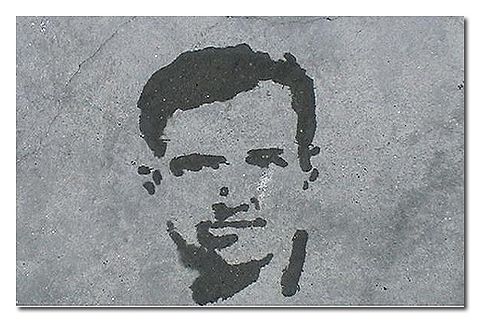Venice Biennale,
Jun 01, 2007 - Nov 21, 2007
Venice, Italy
52th Venice Biennale (2007)
by Cecilia Canziani
The Padiglione Italia as well as the Arsenale felt like a battlefield, scattered with ruins. One left the exhibition - with its orderly paratactic display, its demurred pace - with the sense that there is nothing left to say. That the silence that permeated the rooms corresponds to the silence that we hear in the public spaces of our cities. That the battle has been lost.
For the second time in a row, after the previous edition of the Venice Biennale, I missed once again, and very deeply, the conflict, the debate, the inspiration that Utopia Station and Hou Hanru’s shows within Francesco Bonami’s biennial edition raised. I missed the excitement. There, I felt a certain idea of curating was put under scrutiny, boldly: after years, we are still discussing it. Some hated it, some loved it, but most importantly the 50th International Exhibition contributed grandly to the theoretical debate, raising issues on representation, exhibition strategies, distribution and communication. Curating represented a tool for deconstructing and interpreting the real vis a vis mere representation. This year, despite - or because of - the monumentality of the exhibition’s aspiration, we all left sedated.
II. On the pavilions
The Venice Biennale, among the biennials and triennials of the world - in bloom despite the acclaimed and ever stated obsolescence of the very institution - well embodies the troubled relation between art and its geopolitics.
The dialectics between centre and peripheries offered by the Giardini, which present mainly western nations’ pavilions, and the rest of the city, whose Palazzi are temporary occupied by the rest of the participating countries, seems impossible to overcome.
In an attempt to re-discuss such a constraining geography, Robert Storr included Turkey and China in the Arsenale, in lieu of the countries’ centrality in the current art debate. Check List-Luanda Pop, a fabulously installed and curated show presenting the complexity and variety of contemporary art in Africa through a private collection (a choice that made eyebrows raise), and the first Italian Pavilion dedicated to Francesco Vezzoli and Giuseppe Penone were the other two new entries at the International Exhibition venue.
The pavilions at Giardini were rather disappointing, with some few happy exceptions as Monika Sosnowska who represented Poland with an intervention in and about the architecture of the Institution; Romania which presented a powerful exhibition conceived by curator Mihnea Mircan exploring the idea of the monument in the current political scenario (indeed a counter act to Robert Storr’s show); Isa Genzken who haunted the German Pavilion with rarified, cruel and uncanny totemic presences, memories of today, ghastly premonition of a not so far tomorrow. The Greek pavilion was dedicated to Nikos Alexiou, whose work succeeded in bringing together Western and Eastern cultures.
Great expectations were raised by the nomination of Félix González-Torres for the United States; however the exhibition - based, as curator Nancy Spector claims, on the proposal he submitted (the artist was previously invited to the Venice Biennial, but due to his death his participation was canceled) - was deluded. The exhibition felt crammed, thus affecting the presentation of the works, as in the eminent case of Untitled, a sky on which a bird opens its wings, conceived as a billboard and reduced to a (distorted) wallpaper in the pavilion.
|
![[Project for a Memorial] by Oscar Muñoz](images/it_ven07_11_md.jpg)





![[Project for a Memorial] by Oscar Muñoz](images/it_ven07_11_md.jpg)




